Popular on Food52
8 Comments
Nicole
January 31, 2014
For those in the Kansas City area, Kurlbaum's Heirloom Tomatoes are the BEST source for heirlooms while in season!!
David
August 15, 2013
The definition of "heirloom" tomatoes is highly debated due mostly to length of time seeds have been available but scientifically all heirloom tomatoes are open or self pollinated and hybrids are cross pollinated. Hybrids have been developed by tomato sellers from farmers to grocers to better suit their needs. The two most dominant characteristics they're bred for are large production per plant and thick skins which help protect them from disease and bursting during shipping and handling. Thick skinned tomatoes are usually smoother, more uniform in size and symmetrical in shape. So while most all "ugly" i.e. wrinkly, asymmetrical tomatoes are heirloom or open pollinated there are plenty of heirloom tomatoes that are smooth skinned and symmetrical in shape. So don't feel you have to buy ugly tomatoes to get heirloom or sweet, good eating tomatoes. Hybrid tomatoes tend to have less vibrant color, and less concentration of flavor (and smell). So in looking for a good eating tomato look for vibrant color, thinner skins and good tomato smells.
When speaking of her 3 categories of "regular" tomatoes just like "roma" is a type of plum tomatoes "beefsteak" is a type of larger red, round, or perhaps better called "slicing" or "sandwich" tomato. Almost every tomato that actually has "beefsteak" as a part of it's name is an open pollinated or heirloom tomato. Because most beefsteak tomatoes have medium thick skins they were somewhat successful as a commercial tomato being offered in most grocery stores up until about 5 years ago. Unfortunately now they have to be sought out more and more at farmers markets etc.
A note on "plum" tomatoes. It is estimated that 50%-75% of american canned tomatoes are from 5 hybrid cultivars developed in CA. In Italy it's estimated 50% of Italian plum or canned tomatoes are from the plant "Roma VF" which is an open pollinated plum tomato bred to resist the Verticillium Fungus. I've grown these tomatoes and they are significantly sweeter than ordinary grocery store plum or roma tomatoes in America. About 10% of Italian canned tomatoes are San Marzano tomatoes, a thin skinned, sweeter, thinner and longer shaped plum style tomato. It is open pollinated and also indeterminate in contrast to most plum tomatoes being determinate. To me it's usually worth paying a little more for San Marzano's just like paying a little more for a good sandwich tomato.
When speaking of her 3 categories of "regular" tomatoes just like "roma" is a type of plum tomatoes "beefsteak" is a type of larger red, round, or perhaps better called "slicing" or "sandwich" tomato. Almost every tomato that actually has "beefsteak" as a part of it's name is an open pollinated or heirloom tomato. Because most beefsteak tomatoes have medium thick skins they were somewhat successful as a commercial tomato being offered in most grocery stores up until about 5 years ago. Unfortunately now they have to be sought out more and more at farmers markets etc.
A note on "plum" tomatoes. It is estimated that 50%-75% of american canned tomatoes are from 5 hybrid cultivars developed in CA. In Italy it's estimated 50% of Italian plum or canned tomatoes are from the plant "Roma VF" which is an open pollinated plum tomato bred to resist the Verticillium Fungus. I've grown these tomatoes and they are significantly sweeter than ordinary grocery store plum or roma tomatoes in America. About 10% of Italian canned tomatoes are San Marzano tomatoes, a thin skinned, sweeter, thinner and longer shaped plum style tomato. It is open pollinated and also indeterminate in contrast to most plum tomatoes being determinate. To me it's usually worth paying a little more for San Marzano's just like paying a little more for a good sandwich tomato.
Lindy C.
August 13, 2013
Mystery tomato is an unripe Indigo Rose variety. I have them in my garden now. When ripe, the green becomes more rose colored. I find their flavor less delicious than the other 150 heirloom varieties I grow. I won't regrow them next year (despite their popularity with children as "purple" tomatoes) simply due to the lack of good flavor. I am an urban farmer from Seattle.
Shalini
August 20, 2012
Hi Nozlee! What intensely beautiful tomatoes you have chosen, including the mystery one!
Nice breakdown in types and great, concise fact-finding!
Nice breakdown in types and great, concise fact-finding!
LunaTec
August 18, 2012
Tomato #5 is the Indigo Rose developed at Oregon State University. (http://www.opb.org/news/article/osu-researchers-roll-out-new-tomato/) It supposedly has the highest anti-oxidant level of any other tomato in the world. ?? Don't know about that though. I was told it just came out this year and that it's DNA is intact and undamaged because they never messed with it in the first place. ?? Don't know about that either but it sure is yummy! :D It starts out looking like a little purple and green cherry tomato. I was told it's still unripe as long as the bottom is green. It's supposed to be purple on top and red on the bottom and it's size is more like a small tomato than a cherry tomato. I have 3 plants in my yard here in Portland and they're pretty prolific. And we've had a very mild summer too. Can't wait to see what they do when the sun comes out.
erin
August 13, 2013
I concur. I have an Indigo Rose as well and it's underside will be red when ripe. The indigo/black color comes about when exposed to sun. Great and very productive, and as it is open pollinated, you can save the seeds too!
nutcakes
August 17, 2012
Regarding tomato #5, my uncle has a plant that looks like that with the dark green top. He got it from a Cal State Univ, and it was tagged 'Millionaire's Tomato'. This might be a lead.
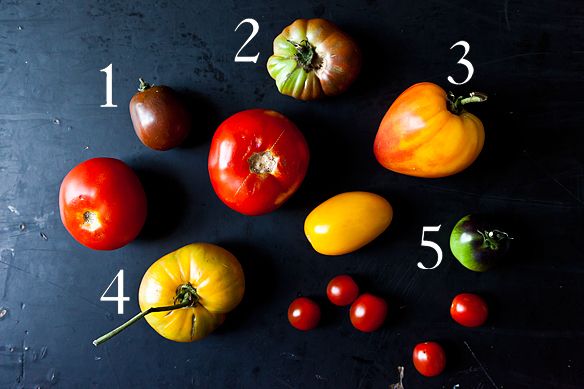
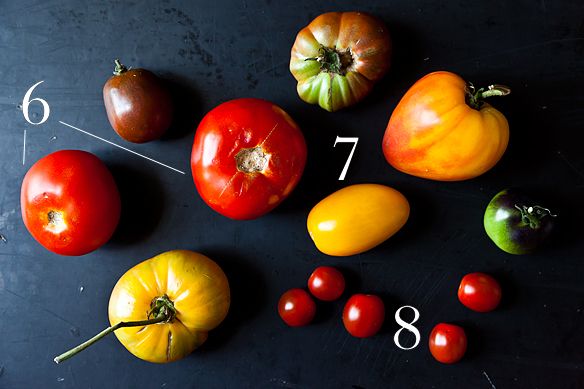
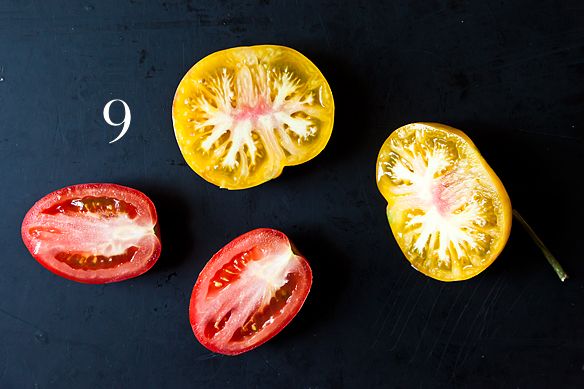
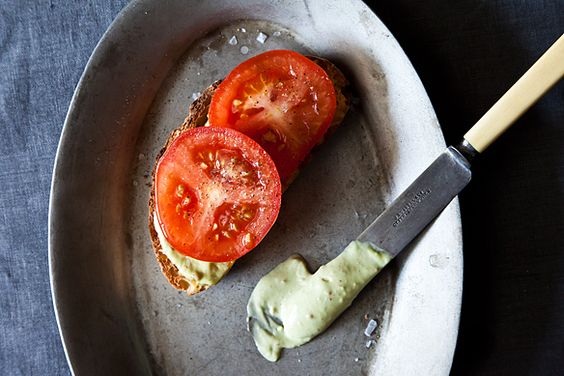

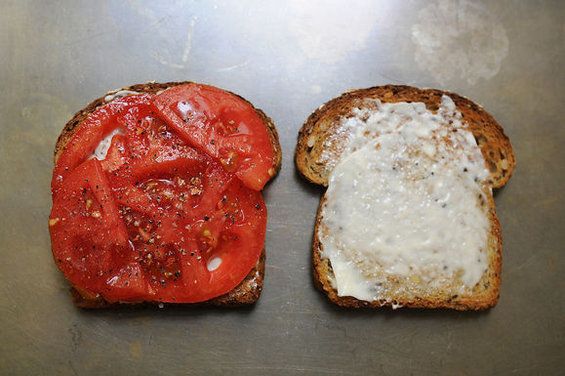

See what other Food52 readers are saying.